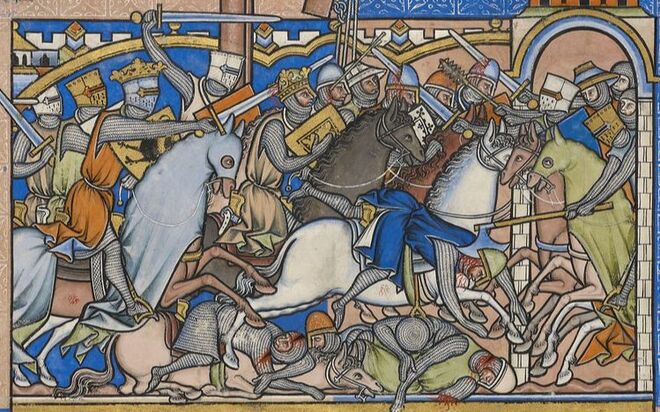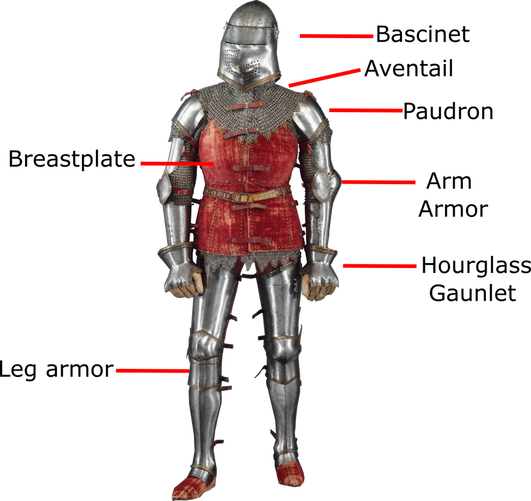|
12/17/2019 1 Comment Churburg-Style Armor (14th Century)In the 11th to 13th century, mail (maille or chainmail) armors were the dominant armors in Western Europe. Knights, Nobles and even kings wore mail in battles as mail armors were very effective against sharp weapons. New developments in the 14th century ends the popularity of mail. Mail no longer provided sufficient protection for the wearer. Thus armorers of this period began the transition to plate armor as pieces of plate were used to reinforce in the most vulnerable area of mail armor. Compared to mail, these reinforced plates provided much needed protection against all type of weapons, including blunt weapons. Still, plates did not cover the entire body of the wearer yet, so mail was used to cover these areas. Armorers in Northern Italy were in the lead as they produced the most quality plate armors. These armors were so popular that many knights from England, France, Germany and Spain purchased them. The armory of Churburg Castle still preserves a large number of armor pieces in this period. Thus historians often use the term Churburg-Style armor (Churburg Armor for short) for Italian armors made in this period Armor of Ulrich IV von Matsch. Castle Churburg Armory. The visored bascinet helmet (bascinet for short) was the helmet of choice in the Churburg armor and it remained a solid choice for knights over the next 150 years. Its design helped deflect weapons and projectile attack to the wearer's face and neck. (Click here to know more about the bascinet) The "houndskull" visor protected the knight's face by deflecting unexpected and fast moving projectiles like arrows and lances. When fighting in close combat, it was more advantageous for the knight lifted the visor to see things better. Riveted aventail which attached to the bascinet to provide the protection to the neck and shoulder of the knight. In later period, the aventails was also replaced by plate gorgets. Around 1350s, breastplate was introduced to strengthen the torso area. Compared to later centuries, breastplates in this period did not covered the entire torso. The breastplate had a large central plate riveted together with some small plates warping around the side to the back of the wearer. Leather straps were used to to keep the breastplate in place. Sometimes, a V-shaped metal piece was riveted to the central plate to stop thrusting weapon sliding to the wearer neck. As time passed, plates armor eventually cover the other part of the body, such as arms, hands, and legs. This armor below was restored in 1920 which individual elements (dated in the early 15th century) discovered in the ruins of Venetian fortress on the island of Eubora. The armor is kept in the Metropolitan Museum of Art.
1 Comment
|
Viet LeThis section is dedicate to the understanding of armor. |
Proudly powered by Weebly












